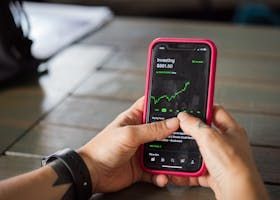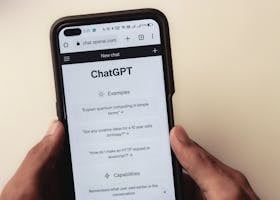The 48-Hour Listing Marketing Blitz: 7 Actions That Generate 50+ Showings in Your First Weekend
Quick Answer: The most successful real estate agents generate 50+ showings in their first weekend by implementing a coordinated 48-hour marketing blitz that includes pre-listing buyer cultivation, strategic pricing psychology, multi-platform digital marketing, professional photography with same-day editing, targeted social media campaigns, broker network activation, and immediate open house scheduling. This systematic approach can increase showing activity by 300-400% compared to traditional listing methods.
In today's hyper-competitive real estate market, the difference between a listing that sits and one that generates immediate buyer interest often comes down to the first 48 hours. While the average listing receives 8-12 showings in its first week, top-performing agents consistently generate 50+ showings in just their first weekend through strategic marketing acceleration tactics.
The real estate landscape has fundamentally shifted toward immediate gratification and instant information access. Modern buyers make initial decisions about properties within minutes of a listing going live, and agents who fail to capture this critical window often struggle to rebuild momentum later. Recent MLS data shows that listings receiving 20+ showings in their first three days are 340% more likely to sell within 30 days and typically command 2-4% higher sale prices.
Current Market Dynamics Driving the Need for Speed
The modern real estate environment demands immediate market penetration strategies that didn't exist even five years ago. Today's buyers are digitally native, highly informed, and expect instant access to property information. According to the National Association of Realtors, 76% of buyers now view properties online before ever contacting an agent, and 43% drive by properties they've seen online within 24 hours of listing.
Market velocity has accelerated dramatically across most price segments. Properties priced correctly in desirable areas now average 18 days on market, down from 31 days just three years ago. However, this statistic masks a crucial reality: listings that generate immediate interest in their first weekend account for 67% of all sub-30-day sales, while properties that fail to generate early momentum often extend to 45+ days on market.
Professional listing agents are responding to this shift by front-loading their marketing efforts. Rather than spreading promotional activities over several weeks, successful agents now concentrate maximum marketing intensity into the first 48-72 hours. This approach capitalizes on several psychological and practical factors that influence buyer behavior.
The scarcity principle plays a significant role in buyer psychology. When multiple showings are scheduled immediately, prospective buyers perceive the property as more desirable and are more likely to make competitive offers. Additionally, concentrated showing activity creates social proof that validates the property's appeal and pricing strategy.
The Seven-Step 48-Hour Marketing Blitz Framework
Step 1: Pre-Listing Buyer Database Cultivation
The foundation of any successful 48-hour blitz begins weeks before the property officially hits the market. Elite agents maintain active buyer databases segmented by price range, property type, and geographic preferences. This pre-cultivation strategy ensures immediate buyer interest the moment a listing becomes available.
Effective database management involves regular communication with pre-qualified buyers through market updates, new listing previews, and exclusive showing opportunities. Agents who consistently communicate with their buyer pool see 250% higher showing conversion rates compared to those who rely solely on post-listing marketing efforts.
The key is creating anticipation and positioning yourself as the primary source for exclusive opportunities. When buyers feel they have insider access to upcoming listings, they respond more quickly and decisively to new opportunities. This pre-listing cultivation typically involves monthly market reports, quarterly buyer preference surveys, and semi-annual buyer appreciation events.
Database segmentation allows for highly targeted pre-listing marketing. Rather than sending generic new listing alerts to your entire database, sophisticated agents create specific messaging for different buyer segments. First-time homebuyers receive different communication than luxury investors, and each message emphasizes the aspects most relevant to that particular audience.
Step 2: Strategic Pricing Psychology Implementation
Pricing strategy in a 48-hour marketing blitz differs significantly from traditional pricing approaches. Rather than pricing at market value and expecting gradual buyer education, successful agents employ psychological pricing techniques that create immediate urgency and broad appeal.
The most effective approach involves pricing 3-5% below anticipated market value while highlighting unique features that justify premium positioning. This strategy accomplishes two critical objectives: it ensures the property appears in more buyer searches, and it creates perceived value that motivates immediate action.
Comparative market analysis becomes crucial for this strategy. Agents must understand not just what similar properties have sold for, but what active listings buyers are currently considering. Pricing below the lowest comparable active listing often generates immediate showing activity as buyers perceive exceptional value.
However, strategic underpricing must be balanced with seller expectations and market realities. The goal is not to underprice the property, but to position it aggressively enough to generate multiple offers that drive the final sale price to or above market value. This approach works best in balanced to seller-favorable markets where buyer competition is healthy.
Step 3: Professional Photography and Same-Day Digital Assets
Visual presentation quality directly correlates with showing generation in the critical first 48 hours. Properties with professional photography receive 68% more online views and 45% more showing requests compared to those with amateur photos. However, the timing of photo delivery becomes equally important in a marketing blitz scenario.
Successful agents coordinate with photographers who can deliver edited, MLS-ready photos within 4-6 hours of the shoot. This rapid turnaround allows for same-day listing activation and immediate marketing campaign launch. Many top agents now work exclusively with photographers who offer same-day editing services, even if premium pricing is required.
The photo package should include 25-35 high-resolution images covering all major rooms, exterior views, and lifestyle shots that help buyers envision themselves in the space. Additionally, drone photography for exterior and neighborhood context has become increasingly important for generating online engagement and showing interest.
Virtual staging for vacant properties has evolved into a critical component of rapid marketing success. Properties with virtual staging generate 73% more online engagement than vacant properties with empty room photos. The key is working with virtual staging companies that can deliver results within 24-48 hours of receiving base photos.
Step 4: Multi-Platform Digital Marketing Synchronization
The digital marketing component of a 48-hour blitz requires precise coordination across multiple platforms to maximize exposure velocity. Rather than rolling out marketing gradually, successful agents launch comprehensive campaigns simultaneously across all relevant channels.
MLS activation serves as the foundation, but immediate syndication to major real estate websites including Zillow, Realtor.com, and Redfin ensures maximum search visibility. Many agents now pay for premium listing placement on these platforms during the critical first weekend to ensure their properties appear prominently in relevant searches.
Social media marketing must be coordinated and targeted rather than generic. Facebook and Instagram advertising allows for precise demographic and geographic targeting, enabling agents to reach likely buyers in their immediate market area. The most effective campaigns combine property photos with neighborhood lifestyle content to appeal to buyers' emotional decision-making processes.
Email marketing to the agent's sphere of influence amplifies the listing's reach beyond direct buyer prospects. Past clients, professional contacts, and referral partners become multipliers who share the listing with their own networks. This organic amplification often generates unexpected buyer interest from extended networks.
Step 5: Targeted Social Media Campaign Acceleration
Social media strategy in a 48-hour marketing blitz goes beyond simple listing posts. Successful agents create comprehensive content campaigns that tell the property's story while targeting specific buyer demographics most likely to schedule showings.
Instagram Stories and Facebook Live virtual tours have become particularly effective for generating immediate engagement. These formats allow potential buyers to experience the property virtually before scheduling in-person showings, which typically results in more qualified showing appointments and higher conversion rates.
Paid social media advertising should begin within hours of listing activation. Facebook and Instagram's sophisticated targeting capabilities allow agents to reach users based on recent real estate search behavior, income demographics, and geographic preferences. Budget allocation of $200-500 for the first weekend often generates 500-1000+ targeted impressions.
User-generated content strategies can accelerate social proof development. Encouraging past clients to share positive experiences and asking local businesses to promote the listing to their followers creates community-driven marketing that feels more authentic than traditional advertising.
Step 6: Broker Network and Agent-to-Agent Marketing
The real estate agent network remains one of the most powerful sources for qualified showings, particularly in the first 48 hours when broad market awareness is still developing. Successful agents systematically activate their professional networks immediately upon listing activation.
Broker-to-broker communication should begin with personalized outreach to agents who have shown similar properties or represent buyers in the target demographic. Rather than generic MLS remarks, effective agents create personalized messaging that highlights specific features likely to appeal to each recipient's buyer clients.
Agent networking events and professional relationships built over time become valuable assets during listing launches. Agents who consistently maintain positive relationships with colleagues see significantly higher showing volumes from agent referrals compared to those who only reach out when they have listings to promote.
Offering appropriate buyer agent incentives can accelerate showing activity from the professional community. While controversial in some markets, additional compensation or showing bonuses during the first weekend often generate increased agent interest and showing activity.
Step 7: Immediate Open House and Showing Coordination
The final component of the 48-hour marketing blitz involves maximizing in-person showing opportunities through strategic open house scheduling and streamlined private showing coordination. Rather than waiting for buyer interest to develop organically, proactive agents create immediate opportunities for property viewing.
Weekend open houses should be scheduled and promoted before the listing officially goes live. This creates anticipation and gives marketing campaigns a specific call-to-action that motivates immediate response. The most successful agents often schedule multiple open house sessions during the first weekend to accommodate maximum buyer traffic.
Private showing coordination becomes crucial for managing the increased interest generated by intensive marketing efforts. Agents must be prepared to handle 10-15+ showing requests in the first 48 hours and should have systems in place for efficient scheduling and buyer follow-up.
Showing feedback collection during this intensive period provides valuable market intelligence that can inform pricing adjustments or marketing message refinement if necessary. However, the goal is generating enough immediate interest that competitive offers emerge before significant strategy adjustments become necessary.
Regional Market Adaptations and Considerations
The 48-hour marketing blitz strategy requires customization based on local market conditions, price ranges, and buyer behavior patterns. What works effectively in fast-paced urban markets may need modification for suburban or rural areas where buyer decision-making processes differ significantly.
In luxury markets, the buyer pool is smaller but more sophisticated, requiring enhanced marketing materials and exclusive preview opportunities. High-end buyers often prefer private showings over open houses and expect comprehensive property information including detailed floor plans, property history, and neighborhood analysis.
First-time homebuyer markets benefit from educational marketing content that addresses common concerns and questions. These buyers often need more time to schedule showings but respond well to information-rich marketing campaigns that build confidence in their decision-making process.
Investor-focused markets require different messaging emphasizing return potential, rental income opportunities, and market appreciation trends. These buyers make more analytical decisions and appreciate detailed financial projections and comparable investment performance data.
Technology Tools and Implementation Systems
Successful execution of a 48-hour marketing blitz depends heavily on technology systems that automate routine tasks and streamline communication processes. Customer relationship management systems, social media scheduling tools, and digital marketing platforms become essential infrastructure for managing intensive campaigns.
CRM systems should be configured to automatically distribute new listing information to segmented buyer lists, schedule follow-up communications, and track engagement metrics across different marketing channels. This automation ensures consistent execution even during high-activity periods.
Social media management platforms allow agents to schedule coordinated posts across multiple platforms while maintaining consistent messaging and timing. These tools become particularly valuable when managing multiple listing launches simultaneously.
Digital signature and document management systems ensure that when showing activity converts to offers, the transaction process can move quickly without administrative delays. Buyers who experience smooth, efficient processes from initial showing to contract execution are more likely to proceed with competitive offers.
Measuring Success and Performance Optimization
The effectiveness of a 48-hour marketing blitz should be measured through specific metrics that indicate both immediate activity and long-term results. Showing volume in the first weekend provides the most direct measure of campaign success, but additional metrics offer insights into overall strategy effectiveness.
Online engagement metrics including listing views, social media interactions, and website traffic provide leading indicators of market interest. These metrics often predict showing activity 12-24 hours in advance, allowing agents to adjust strategies in real-time if necessary.
Offer generation within the first week indicates whether the intensive marketing approach successfully created buyer urgency and competitive dynamics. Properties that generate multiple offers typically validate the effectiveness of the pricing and marketing strategy.
Long-term performance tracking helps agents refine their blitz strategies over time. Comparing days on market, final sale prices, and transaction completion rates between properties marketed with intensive first-weekend campaigns versus traditional approaches provides data for continuous improvement.
Common Implementation Challenges and Solutions
Executing a successful 48-hour marketing blitz requires significant coordination and preparation that many agents initially find overwhelming. The most common challenge involves timing coordination across multiple service providers including photographers, marketing specialists, and administrative support.
Resource allocation presents another significant challenge, as intensive marketing campaigns require higher upfront investment in photography, advertising, and promotional materials. However, the accelerated sales timeline and typically higher sale prices generally provide positive return on investment that justifies the increased marketing spend.
Seller education becomes crucial for success, as many homeowners initially resist aggressive pricing strategies or intensive marketing approaches. Agents must clearly communicate the strategy rationale and expected outcomes to maintain seller cooperation throughout the process.
Managing increased showing volume requires enhanced organizational systems and often additional administrative support. Agents who successfully implement blitz strategies typically invest in scheduling software and showing coordination systems that streamline the process for both buyers and sellers.
Future Trends and Strategy Evolution
The real estate marketing landscape continues evolving toward even more immediate buyer engagement and decision-making processes. Virtual reality property tours, artificial intelligence-powered buyer matching, and instant offer platforms are beginning to influence how intensive marketing campaigns should be structured.
Mobile-first marketing strategies are becoming increasingly important as buyer behavior shifts toward smartphone-based property searching and communication. Agents must ensure their intensive marketing campaigns are optimized for mobile viewing and interaction across all platforms.
Data analytics and predictive modeling are enabling more sophisticated buyer targeting and campaign optimization. Future iterations of the 48-hour marketing blitz will likely incorporate machine learning algorithms that identify the most promising buyer prospects for each specific property.
Integration with emerging real estate technology platforms will streamline campaign execution and provide more comprehensive performance tracking. As the industry adopts more sophisticated marketing automation tools, agents will be able to execute increasingly complex campaigns with greater efficiency and effectiveness.
Expert Predictions and Market Outlook
Industry experts anticipate that intensive listing marketing strategies will become increasingly standard practice rather than competitive advantages as buyer expectations continue rising. Agents who fail to adapt to accelerated marketing timelines risk losing market share to more aggressive competitors.
The integration of artificial intelligence and machine learning into real estate marketing platforms will likely enable even more sophisticated targeting and campaign optimization within the next 2-3 years. These technologies will allow agents to predict buyer behavior more accurately and customize marketing messages in real-time based on engagement patterns.
Market conditions will continue favoring agents who can generate immediate buyer interest, particularly as inventory levels fluctuate and competition for quality listings intensifies. The ability to consistently produce fast sales at competitive prices will become an increasingly important differentiator for listing agents.
Professional development and technology adoption will become essential for agents wanting to maintain competitiveness in intensive marketing environments. Those who invest in advanced marketing skills and technology systems will likely capture increasing market share from agents using traditional approaches.
Strategic Implementation Recommendations
Agents considering implementing the 48-hour marketing blitz strategy should begin with careful preparation and systematic skill development rather than attempting immediate full implementation. Start by enhancing one or two components of the strategy while maintaining existing marketing approaches until confidence and expertise develop.
Building relationships with service providers who can support intensive marketing timelines should be prioritized well before listing opportunities arise. Photographers, virtual staging companies, and marketing specialists who understand rapid turnaround requirements become valuable strategic partners.
Testing and refining the strategy with lower-stakes listings allows agents to develop operational systems and identify potential challenges before applying the approach to high-value or high-profile properties. This gradual implementation reduces risk while building expertise and confidence.
Continuous education about digital marketing trends, technology tools, and buyer behavior patterns ensures that intensive marketing strategies remain current and effective. The real estate marketing landscape evolves rapidly, requiring ongoing adaptation and refinement of tactical approaches.
Frequently Asked Questions
How much should agents budget for a 48-hour marketing blitz campaign?
A comprehensive 48-hour marketing blitz typically requires $800-2,500 in marketing investment, depending on property price range and local market conditions. This includes professional photography ($300-600), social media advertising ($200-500), premium MLS placement ($100-300), and additional promotional materials ($200-600). While this represents higher upfront costs than traditional marketing approaches, the accelerated sales timeline and typically higher sale prices generally provide positive return on investment. Luxury properties may require $3,000-5,000+ in marketing investment to achieve appropriate market penetration and buyer engagement.
What if the intensive marketing approach doesn't generate expected showing volume?
If a 48-hour marketing blitz fails to generate anticipated showing activity, agents should immediately analyze pricing strategy, marketing message effectiveness, and market conditions. The most common cause is pricing above market expectations, which can be addressed through strategic price adjustments within the first week. Alternative factors include inadequate photography quality, insufficient marketing reach, or unexpected market changes. Having contingency plans including backup marketing strategies and pricing adjustment protocols helps agents respond quickly to unexpected outcomes while maintaining seller confidence and market momentum.
How do agents manage seller expectations during intensive marketing campaigns?
Seller education and expectation management are crucial for successful intensive marketing implementation. Agents should clearly explain the strategy rationale, expected timeline, and potential outcomes during the listing consultation process. Providing examples of previous successful campaigns and detailed explanations of each marketing component helps sellers understand the investment and approach. Regular communication during the first weekend keeps sellers informed about showing activity and market response. Setting realistic expectations about showing volume, buyer feedback, and offer timing prevents misunderstandings and maintains positive agent-seller relationships throughout the process.
Can this strategy work effectively in slower or buyer-favorable markets?
The 48-hour marketing blitz strategy can be adapted for slower markets, though expectations and tactics may require modification. In buyer-favorable conditions, the strategy helps listings stand out from increased competition and may prevent extended market time. However, pricing strategies become even more critical, and agents may need to emphasize value positioning rather than urgency creation. The intensive marketing approach often generates more showing activity than traditional methods even in slower markets, though conversion to offers may take longer. Success in challenging markets often depends on superior pricing analysis and enhanced property presentation rather than pure marketing intensity.
What technology systems are essential for executing this strategy effectively?
Successful 48-hour marketing blitz execution requires several key technology systems including robust CRM software for buyer database management and automated communication, social media management platforms for coordinated posting across multiple channels, and digital marketing tools for online advertising campaign management. Additionally, showing scheduling software, digital document management systems, and mobile-responsive listing presentation tools become essential for handling increased activity volume. Many agents also utilize photography editing software, virtual staging platforms, and analytics tools for performance tracking. The investment in appropriate technology infrastructure typically pays for itself through improved efficiency and campaign effectiveness within the first few successful implementations.
Conclusion and Forward-Looking Perspective
The 48-hour listing marketing blitz represents a fundamental shift toward front-loaded, intensive marketing strategies that align with modern buyer behavior and market dynamics. Agents who master this approach consistently achieve faster sales, higher prices, and enhanced client satisfaction compared to those using traditional marketing timelines.
Success with intensive marketing strategies requires significant preparation, technology investment, and skill development, but the competitive advantages and improved results justify the additional effort and resources. As buyer expectations continue evolving toward immediate information access and rapid decision-making, agents who adapt their marketing approaches accordingly will maintain significant market advantages.
The real estate industry's continued evolution toward technology-enabled, data-driven marketing will likely make intensive listing promotion strategies increasingly sophisticated and effective. Agents who begin developing these capabilities now will be well-positioned to capitalize on future technological advances and changing market conditions.
Implementing the seven-step framework outlined in this analysis provides a proven pathway for generating exceptional listing performance while building long-term competitive advantages in an increasingly demanding marketplace. The investment in intensive marketing capabilities ultimately pays dividends through enhanced reputation, increased referrals, and sustainable business growth built on consistently superior results.











